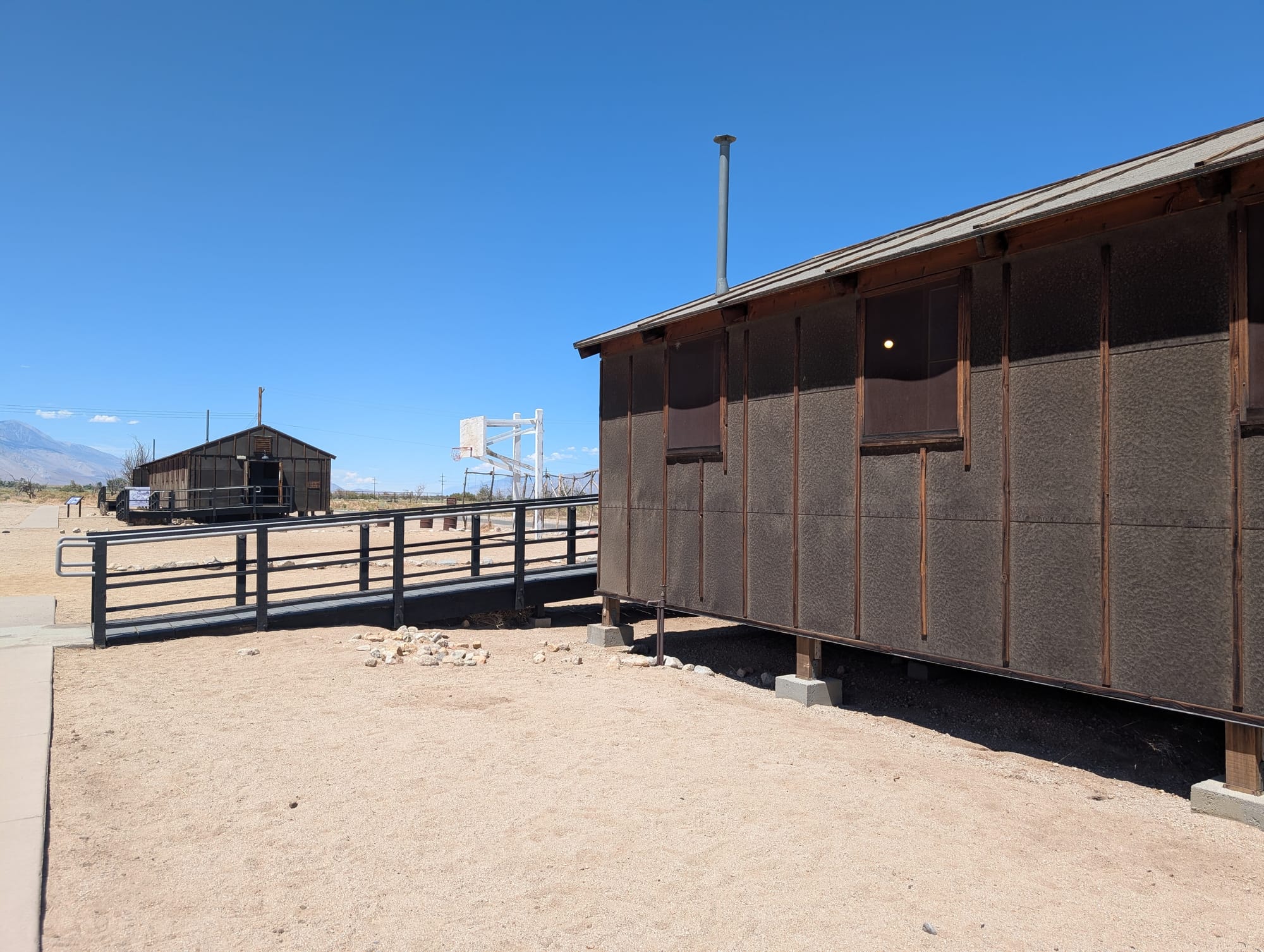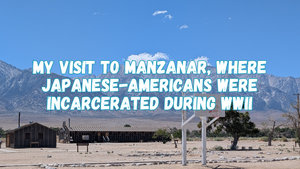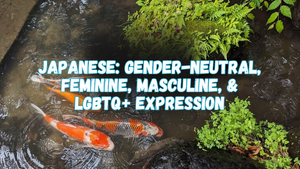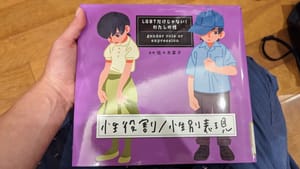While the USA continues to build internment camps and incarcerate people, for example in "Alligator Alcatraz", I visited Manzanar National Historic Site, the location of a concentration camp where Japanese-Americans were incarcerated during WWII.
My experience of visiting the place made the history feel real and present today. The sun was hot and the wind was fierce. The lack of water in the dry brush and the absence of anyone living on the land today are other parts of the story of the government's impact on people there.
LGBTQIA2S+ people were certainly affected by these forced relocations, although the discrimination and bigotry among Americans at that time means there is little documented evidence of such folks. (The evidence which I've found online, I'll share with you)
I'd love to share some of what I learned from Manzanar with you, both the injustice and the hope.

The United States violently moving the Paiute people and forcibly relocating and incarcerating Japanese-Americans there was not very long ago, and feels extremely relevant to our government's current actions.
The National Park Service introduces Manzanar National Historic Site: "In 1942, the United States government ordered more than 110,000 men, women, and children to leave their homes and detained them in remote, military-style camps. Manzanar War Relocation Center was one of ten camps where the US government incarcerated Japanese immigrants ineligible for citizenship and Japanese American citizens during World War II."
Driving down Highway 395 south of Bishop, the sun and temperature intensified. On our right towered the Sierra Nevada Mountains, on our left the White Mountains, part of the Great Basin and Range. Sagebrush, sand, and rocks stretched for miles in the valley. Occasionally we saw a green stream winding down from the mountains into meadows.
The location that is now Manzanar was originally solely the home of the Owens Valley Paiute people. Settlers moved in and the US Army violently forced the Indigenous people from their homes in 1863.
Paiutes had managed the land with irrigation for agriculture. Settler farmers took over the irrigation systems but weren't very successful.
The farmers' venture didn't last long. The Los Angeles Department of Water and Power began to acquire the water rights beginning in the early 1900's and by 1929, owned all of Manzanar's water and land rights. The water flowing down from the mountains was diverted into the aqueduct carrying that water south all the way to LA.
Five years later, the town was abandoned. Without water flowing down into the valley, the landscape looked barren, as it is today.
The Bishop Paiute Tribe, a Sovereign Tribal Nation, is located nearby today. From their About Us webpage: "The culture of the Paiute people is deeply embedded with the surrounding environment. The natural resources provided by land, water, and air, have been safeguarded by the tribe for numerous years. The traditions of the Paiutes are alive and active today, and can be witnessed in one of the tribes many traditional functions and festivities."

So the government selected this land to build one of their ten camps, and leased the land and water from the city of LA. (They used the water for agriculture, growing crops and even plants that were used to make rubber for the war efforts.)
At no point in this history has the land been returned to the Paiutes.







